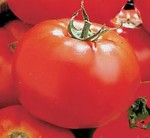 After you have selected a site for you vegetable garden you should decide what vegetables you want to grow. Sounds easy? It is more difficult than you might think because you will need to show restraint if the garden is to be productive and enjoyable. You have to consider many factors, some from the heart but others from a logical point of view.
After you have selected a site for you vegetable garden you should decide what vegetables you want to grow. Sounds easy? It is more difficult than you might think because you will need to show restraint if the garden is to be productive and enjoyable. You have to consider many factors, some from the heart but others from a logical point of view.
Here are some important factors to consider when choosing vegetables for the home garden:
1. Family Preferences: What do you and your family like to eat? A family that likes salads may want to produce greens, tomatoes, onions, cucumbers, and radishes while a family that likes pasta may want to have an abundance of tomatoes and basil for pasta sauce.
2. Aim of Garden: You may expect to eat all your produce or, alternatively, eat some and store the rest. If you intend to can, freeze or otherwise preserve produce for later use you may want to choose different varieties and plant successive crops.
3. Growing Season: The date of the last and first frost determine the length of the growing season. Some crops like artichokes require a very long growing season while others like radishes like a short one. Sometimes plants that have a moderate growing season (tomato) can be grown in the area that is vacated by a crop with a very short one (radish). In other words, vegetables can be teamed up so that an area can grow two vegetables in a single growing season.
4. Temperature during the Growing Season: Some vegetables like radishes, lettuce, and broccoli prefer cool weather and will not grow or grow poorly when temperatures get high. Other vegetables, like summer squash and tomatoes, need warm weather to grow and produce well.
5. Perennial, Annual, or Biennial? Most vegetables are annuals and are planted each year. A few like asparagus and horseradish are perennial and will require a permanent place in your garden. Biennials like parsley will need to remain in the same space for two years.
6. Size of the Garden: If your garden space is limited you might be interested in vegetables that give the greatest yield for the space (and effort). These include tomatoes, bush snap beans, lettuce, carrots, beets, and squash (squash plants are large but each one produces many squash). Or, perhaps you might consider varieties that come in compact sizes or can be grown vertically as vines. You may want to avoid the vegetables that take up a lot of space like pumpkins, potatoes, melons.
7. Recommended Vegetables and Varieties: Some vegetables grow well in one area but not in another. Call your county extension agent, ask neighbors, go to the local farmers’ markets and ask and observe what grows well (make sure vendors at the farmers’ markets are local …many are not and carry crops grown elsewhere.)
8. Time and Experience Level: A vegetable garden takes time and work and you often have to do chores like watering when it is not convenient. If you are a novice gardener you may not know how much time and energy you want to put into a garden. Perhaps you should try at least some of the very easy crops such as bush beans, cucumbers, lettuce, radish, and squash to ensure success with reasonable time and effort. Avoid more demanding vegetables like broccoli and celery.
When you get the bug to have a vegetable garden the impulse to run out and buy a lot of seeds and plants is great but a little patience and planning can go a long way to creating a garden you will enjoy. By carefully planning you can maximize the garden space as well as your time and effort so that you have a large and tasty crop of vegetables that will take you through the whole summer and longer, if you so desire. Time spend planning now will pay off with greater yields and less work.
